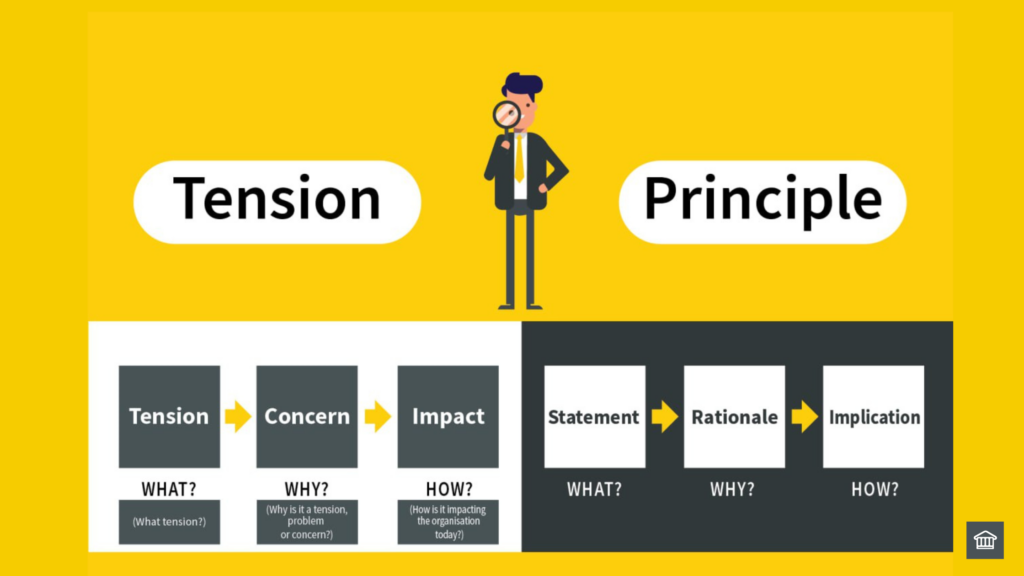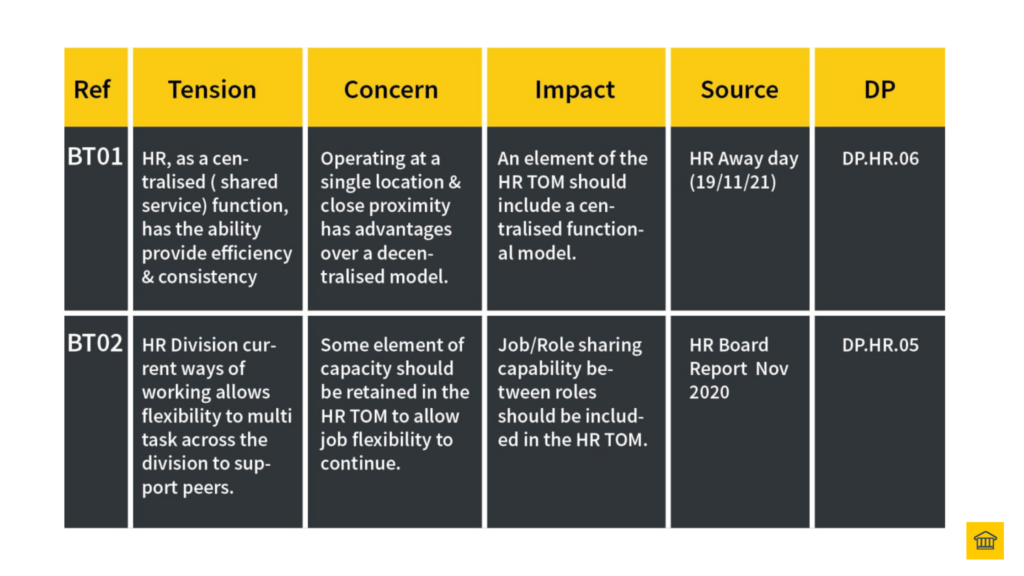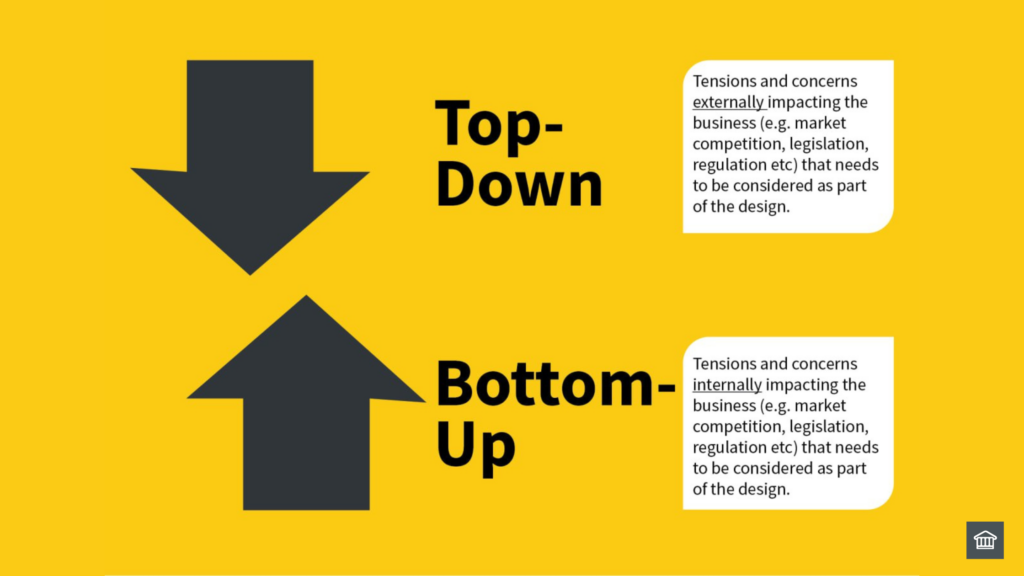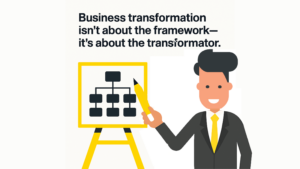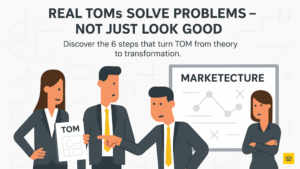Welcome to our comprehensive guide, “15 Design Principles to Make Your Business Transformation Successful”.
This blog post, authored by HOBA TECH, offers valuable insights into the key guidelines that can make your business transformation journey smoother and more effective.
We delve into the importance of addressing potential risks and challenges associated with the transformation and developing mitigation strategies.
Furthermore, we highlight the significance of leveraging technology to support and enhance transformation efforts, implementing tools and systems that streamline processes, improve efficiency, and enable innovation.
Heres what we’ll cover (click the links to skip to the section below):
NB – Click to expand images 📸
Design Principles are misunderstood and misused. They have a specific role in business transformation, they will not only speed up your transformation, they will make it successful. If you are a Business Transformator who wants to transform your business with less risk and less time, then this article is for you.
There are a lot of myths about Design Principles, which has resulted in them being misused. For once and for and for all, we’ll give you the definitive definition, so you get the most out of them. Read on.
Business Transformation design principles are a set of guidelines that do two (2) things, and two things only:
- Address concerns and tensions - on your transformation, and
- Define the scope - the scope of what the transformation will aim to do, and not do.
There are benefits, pros, and cons of using Design Principles (and when to use them), we get into it in this article. Keep reading.
The benefit for organisations in implementing and following design principles, is when undertaking significant changes to their operations, processes, strategies, and structures with these principles help ensure that the transformation efforts are well-planned, effectively executed, and aligned with the organisation’s goals and values.
What are design principles?
Business design principles are foundational guidelines that inform the creation and development of business strategies, products, and services. Their purpose is to provide a structured framework for innovative problem-solving and value creation. These principles guide the alignment of user needs, creative thinking, and business goals, resulting in effective solutions. They are used by considering the unique context and objectives of a project, then applying relevant principles to design strategies that address challenges and meet customer needs.
While there isn’t a fixed structure, business design principles typically encompass aspects such as user-centeredness, iterative processes, collaboration, data-driven decisions, and sustainability. To put them together, one assesses the problem, defines goals, selects appropriate principles, and iteratively refines solutions through prototyping and testing. This process involves cross-disciplinary collaboration, incorporating insights from user research and data analysis. By combining these elements, business design principles drive meaningful innovation and the creation of solutions that resonate with users while achieving organisational objectives.

6-Steps to Business Transformation Success
WHAT THE TOP 30% OF ORGANISATIONS KNOW THAT YOU DON’T 👉

Design Principles are misunderstood and misused. They have a specific role in business transformation, they will not only speed up your transformation, they will make it successful." 🤔💡🚀 #DesignPrinciples #BusinessTransformation #Success
Heath Gascoigne Tweet
The Process
The process of identifying the Design Principles is a cause-and-effect relationship, as shown below:
Here’s an example tension:
Design Principle Parts
Design Principles are made of 4 parts:
- Name - the name of the Design Principle (DP)
- Statement - what the DP is about
- Rationale - why do we have it (to address a particular or specific tension or concern)
- Implication - now that you have adopted this principle, how will you use it
Here’s a sample Design Principle (with its rationale and implication):
The Approach
The approach to developing the DP is two-dimensional; top-down (externally facing) and bottom-up (internally facing):
Common Business Transformation Principles (15)
Here are some common business transformation design principles:
Principle #1: Clarity of Purpose and Vision
Clearly define the purpose of the transformation and create a compelling vision that communicates the intended outcomes and benefits to all stakeholders. This helps rally support and commitment throughout the organisation. (Want to know about vision mapping? Click here)
Principle #2: Customer-Centric Approach
Place the customer at the centre of the transformation. Understand their needs, preferences, and pain points to design solutions that enhance their experience and deliver value.
Principle #3: Agility and Flexibility
Design the transformation process to be agile and adaptable to changing circumstances. Embrace iterative approaches and continuous improvement to respond effectively to evolving business environments.
Principle #4: Cross-Functional Collaboration
Foster collaboration across different departments and functions. Break down silos to encourage information sharing, knowledge transfer, and a holistic approach to problem-solving.
Principle #5: Data-Driven Decision Making
Base transformation decisions on data and insights rather than assumptions. Collect, analyse, and interpret data to make informed choices and measure the impact of changes.
Principle #6: Leadership Commitment and Engagement
Secure commitment from top leadership and involve them actively throughout the transformation process. Their support and engagement set the tone for the rest of the organisation. (Ineffective leadership might ruin the transformation process. Here’s how)
Principle #7: Empowerment and Ownership
Empower employees at all levels to take ownership of the transformation. Encourage them to contribute ideas, suggest improvements, and participate in the implementation process.
Principle #8: Clear Communication
Establish a robust communication strategy to keep all stakeholders informed about the transformation’s progress, goals, and changes. Open and transparent communication minimises uncertainty and resistance.
Principle #9: Change Management
Implement effective change management practices to address potential resistance, manage emotions, and facilitate a smooth transition for employees.
Principle #10: Focus on People and Culture
Recognize the importance of organisational culture and the role it plays in successful transformation. Align cultural values with the desired outcomes of the transformation.
Principle #11: Risk Management
Identify potential risks and challenges associated with the transformation and develop mitigation strategies. Addressing risks proactively can prevent disruptions and setbacks.
Principle #12: Technology Enablement
Leverage technology to support and enhance transformation efforts. Implement tools and systems that streamline processes, improve efficiency, and enable innovation.
Principle #13: Continuous Learning
Promote a culture of continuous learning and development. Encourage employees to acquire new skills, adapt to changing roles, and embrace new ways of working.
Principle #14: Measurable Outcomes
Define clear and measurable key performance indicators (KPIs) to track the progress and success of the transformation. Regularly assess performance against these metrics and make adjustments as needed.
Principle #15: Sustainability
Design the transformation to be sustainable in the long term. Consider the environmental, social, and economic impacts of the changes and aim for solutions that create lasting value.

"There are a lot of myths about Design Principles, which has resulted in them being misused. For once and for all, we’ll give you the definitive definition, so you get the most out of them." 🧐📚🎯 #MythsBusted #DesignPrinciples #KnowledgeIsPower
Heath Gascoigne Tweet
Conclusion
In conclusion, the second benefit of Design Principles, is by having defined and agreed the Design Principles with your stakeholders, up and down the organisation, that address specific concerns and tensions, and contain the scope or what you will do, and as importantly – what you won’t do, you will speed up the transformation as there is no more debate, about what is in, and what is out of scope for the project and program, and why, because you have already done it, and agreed it.
Keep your Design Principles in your back pocket, or printed out in your folder or hung on the wall for all to see, and remind them there are the Design Principles, you agreed to them, this is what you said, and agreed, this is what we are doing, and this is what we are not doing.

Become a Master of Business Transformation
Learn about Business-led Business Transformation using the proven 6-step agile transformation framework trusted by the UK Government, FTSE-100 and fast growing companies
"There are a lot of myths about Design Principles, which has resulted in them being misused. For once and for all, we’ll give you the definitive definition, so you get the most out of them." 🧐📚🎯 #MythsBusted #DesignPrinciples #KnowledgeIsPower
Heath Gascoigne Tweet
About HOBA Tech
If you liked what you read, learn more about Business Transformation and how to bring it to reality with less stress, less effort, less time, less cost, and higher profit. Learn about our award-winning agile Business Transformation framework, already used by thousands across the world to transform their business, including the UK Government, FTSE-100 Companies and start-ups, check it out here.
If you want to read why others are calling The Business Transformation Playbook the “Business Transformation Bible”, read the reviews on Amazon here.
Hope you find that useful. If you did, let me know in the comments below what you like and would like to see next, and share this with anyone you think would benefit from it!
Thank you for reading this!
Sincerely,

Heath Gascoigne
P.S. If you want to join our Business Transformator community of 2,000+ like-minded Business Transformators, join the community on the Business Transformator Facebook Group here.
P.P.S. If you want to learn more about business transformation, check out The Business Transformation Playbook here.


